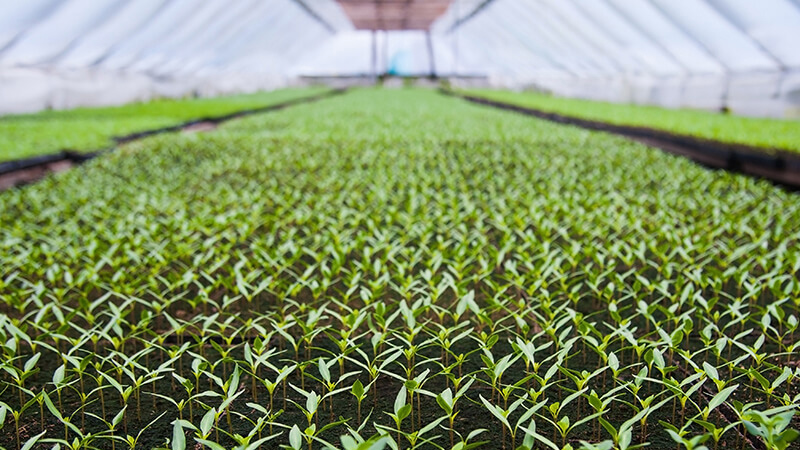Why Consistency is Critical in Greenhouse Heating

When positioning greenhouse heating units, the goal is to aim the flow of heated air along the inside of the exterior walls to create a circular motion within the space — almost a whirlwind effect — to ensure the most even temperature in the center of the room.
Photo courtesy of Modine
Heating a commercial greenhouse has a lot in common with the story of “Goldilocks and the Three Bears.” It’s about keeping the temperature even and consistent throughout the space — not too hot, not too cold, just right.
A little forethought in planning heating unit size and positioning can go a long way toward maintaining even temperatures in your commercial greenhouse.
Control Placement
One simple issue that can hinder the effectiveness of a heating unit is the placement of the controlling thermostat or temperature sensor. Placing the temperature control too close to the unit can cause inaccurate readings. The control unit, whether a standard thermostat or temperature sensor, needs to be placed somewhere with an even mix of air to properly gauge the overall temperature of the greenhouse and provide effective heating.
Position Unit With Air Flow in Mind
Just as important as the placement of the thermostat or temperature sensor is the position of the heating units themselves. When positioning heaters, the goal is to aim the flow of heated air along the inside of the exterior walls to create a circular motion within the space — almost a whirlwind effect — to ensure the most even temperature in the center of the room. This can involve positioning heating units in the corners of the space to blow air in opposite directions.
The Right Size Matters
The time to solve temperature problems is before the units are ever installed by ensuring they are appropriately sized for the space. The old school of thought when choosing units for heating applications used to be that bigger equals better. It doesn’t.
Properly sizing the heating units is critical. Oversizing heating units sets growers up for failure. If a heater is too large for the space, it will short-cycle, turning on and off in rapid succession, which causes wear and tear on the unit and temperature swings throughout the greenhouse. It can also lead to condensation, contributing to mold and mildew growth.
Think Redundancy
The final consideration for maintaining constant temperatures within the greenhouse is simple. Do you have backup systems in place? Consider what happens if a greenhouse heater goes out in the middle of the night without a backup, especially during the winter months. If nobody discovers the problem until the next day, it can be too late to save the plants inside, meaning wasted time and money.
Increasingly, commercial growers are choosing to install multiple heating units inside their greenhouses, so if one unit fails, the temperature can still be maintained, and the plants inside will be protected. A backup heater can be one of the best defenses a grower has against crop failure.
Maintaining even and consistent temperatures within a greenhouse means better production and less chance of failure. Creating the optimum growing environment during the winter means planning ahead by taking the time to make sure heating units are correctly sized and positioned. A little effort at the start of the process pays off in lower costs and less frustration down the road.









